Poker Home Games - How to Shuffle and Deal
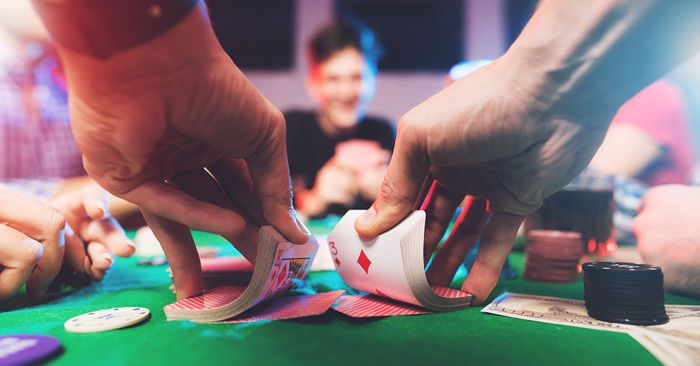
Home games are fun, but sometimes, as we know, the ability to shuffle like a casino dealer would help speed things up! Luckily, the PokerNews crew has come up with a guide to help you with some hints and tips on how to shuffle and deal in poker - so your home game will stay at the right pace!
How to Shuffle at Your Poker Home Game?
Mastering the shuffle is an essential skill for hosting a seamless poker home game. Learn various shuffling techniques or find the best automatic cards shufflers on the market to impress your guests!
Automatic Card Shufflers at Your Home Game
First up - automatic card shufflers. These machines offer a convenient and efficient way to shuffle cards in your poker home game. They quickly and thoroughly shuffle multiple decks, saving time and ensuring randomness in card distribution. They're ideal for larger games or if manual shuffling proves cumbersome.
By eliminating potential human errors and biases in shuffling, these machines enhance fairness and maintain the integrity of the game. Their ease of use allows hosts to focus on the game itself, promoting a smoother, more enjoyable gaming experience for all players without compromising the authenticity of the shuffle. So if you are not really a big fan of self dealing or shuffling these are definitely for you!
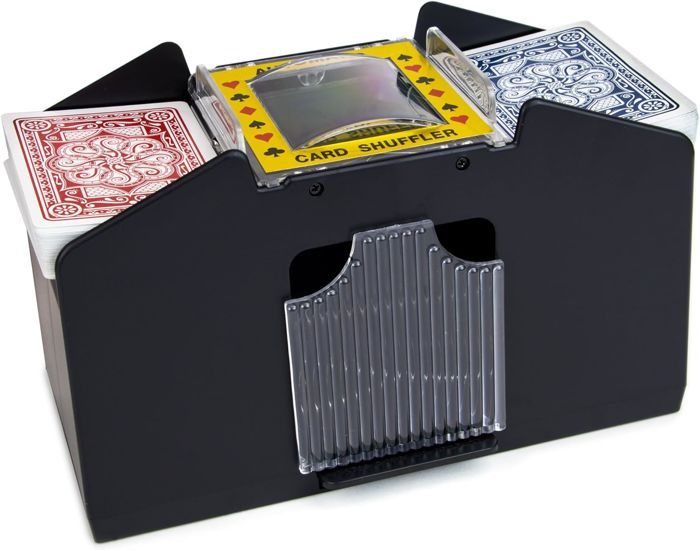
The Top 3 Best Automatic Card Shufflers for your Poker Home Game
After playing many a home game in our time, the PokerNews staff have come up with our favorite card shufflers on the market.
Trademark Poker Card Shuffler
Compact and battery-operated, this shuffler efficiently handles up to two decks, making it perfect for smaller home games with ease of use.
Brybelly Automatic Card Shuffler
Handling up to six decks, this shuffler boasts quiet operation and a sleek design, ideal for larger gatherings where multiple decks are in play.
Casino Deluxe Automatic 4 Deck Card Shuffler
This professional-grade shuffler manages up to four decks, offering speed and precision, perfect for mid-sized games seeking a touch of sophistication.
Standard Card Shuffle at Your Home Game
Wowing the table with a shiny, new card shuffler is a power move and a half, but what might gain even more respect is impressing your guests with a good old-fashioned card shuffle by hand. If you nail it, it looks smooth and seamless - but a good card shuffle by hand doesn't come naturally. Here's how to shuffle a pack of cards.
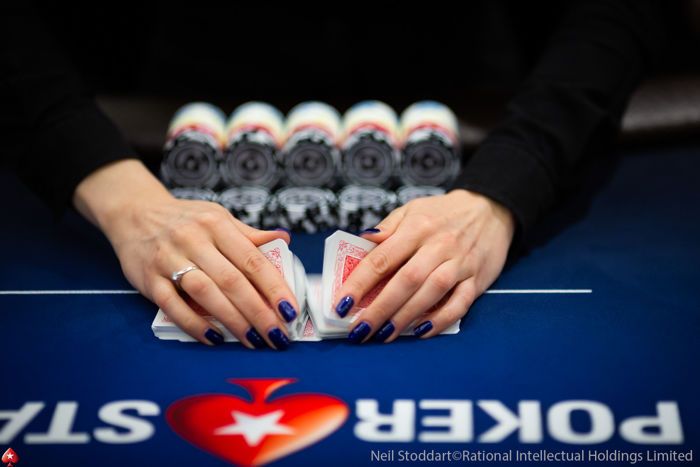
"gain more respect by impressing your Home Game guests with a good old-fashioned card shuffle"
Riffle Shuffle (also known as the "Hindu Shuffle")
- Step 1:Hold the deck in one hand with the cards facing down, using your thumb to support one side and your fingers on the other.
- Step 2: Gently bend the cards upward, allowing them to fall in an interleaved manner as you release pressure on the deck.
- Step 3: Gradually release cards from both halves, allowing them to merge together. Alternate releasing a few cards from each half to ensure an even mix.
- Step 4: Square the deck by aligning the edges and lightly tap the cards against the table to straighten them.
Overhand Shuffle
- Step 1: Hold the deck in one hand, using your thumb to support one side and your fingers on the other.
- Step 2: With your free hand, start transferring small groups of cards from the top of the deck to the bottom, one after the other, in a continuous motion.
- Step 3: Keep repeating this process, allowing cards from the top to fall to the bottom until the entire deck is shuffled.
- Step 4: Square the deck by aligning the edges and gently tap the cards against the table to straighten them.
Practicing these techniques helps ensure a thorough mix of the cards, maintaining randomness in the deck for a fair and unbiased distribution during your poker home game.
How to Shuffle Cards Quickly
Ok so your home games are going well but....the speed of the game is lacking would you like to know how to speed things up even more? We at PokerNews we got you covered, here's a technique called the "Strip Shuffle," a quick and efficient method favored by experienced card players:
Strip Shuffle
- Step 1:Divide the deck into two roughly equal halves.
- Step 2: Hold one half in each hand with the cards facing down, gripping the sides firmly.
- Step 3: Using your thumbs, strip off small packets of cards from the bottom of each half, allowing them to interleave in an alternating pattern into a new stack held by your fingers.
- Step 4:Continue stripping off packets from both halves simultaneously, allowing the cards to blend together quickly.
- Step 5:Once both halves are depleted, join the remaining cards together, ensuring they are well mixed.
- Step 6:Square the deck by aligning the edges and lightly tap the cards against the table to straighten them.
The strip shuffle is a swift method that efficiently mixes the cards in a relatively short time. With practice, players can execute this technique rapidly, making it ideal for games that require quick shuffling between hands or for players aiming to speed up the pace of their poker home game without sacrificing randomness in the deck.
Who Should Shuffle at Your Poker Home Game
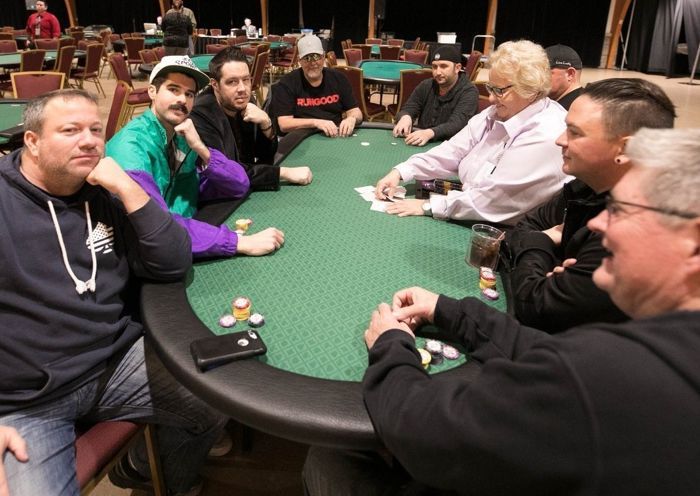
In a poker home game, the responsibility of shuffling often falls to the player designated as the dealer for the current hand. However, to maintain a smooth flow and consistent shuffle quality, having a dedicated and skilled shuffler throughout the game is acceptable. As long as the dealer chip and blinds rotate clockwise with each hand, ensuring fairness and equal opportunities among players, any competent shuffler can handle the cards, enhancing efficiency and allowing the game to proceed seamlessly.
How to Deal at Your Poker Home Game?
Dealing in a poker home game sets the stage for the action. PokerNews has put together some lessons to learn the essential steps and etiquette for a smooth game.
Standard Card Dealing at Your Home Game
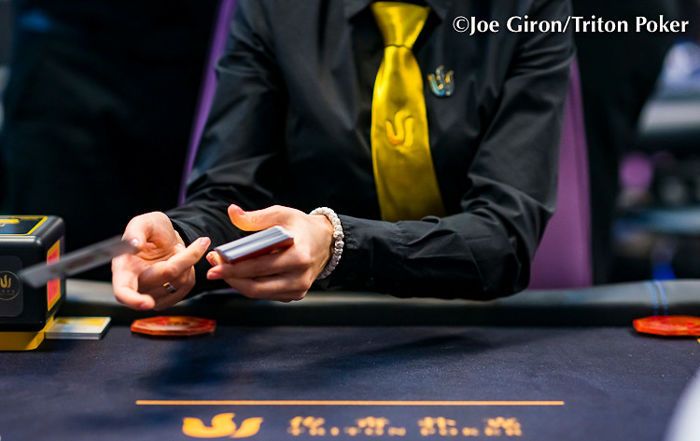
Here��s PokerNews's step-by-step guide:
- Shuffle the Deck: Before dealing, ensure the deck is thoroughly shuffled. Mix the cards by spreading them out on the table and combining them in a random order. You can use techniques like the overhand shuffle or riffle shuffle.
- Prepare the Deck: Once shuffled, gather the cards into a neat stack. Hold the deck face down in one hand. Use your other hand to keep the cards aligned.
- Determine the Dealer: Decide who will be the dealer for the first hand. The dealer position usually rotates clockwise after each hand.
- Deal the Cards: Starting with the player to the dealer's left, distribute the cards one at a time in a clockwise direction. For games like poker, deal the cards face down to each player, ensuring fairness and secrecy. Deal the appropriate number of cards for the game being played.
- Manage Betting Rounds: After all players receive their cards, betting rounds or game actions occur. Follow the rules of your specific game regarding betting, folding, raising, or calling.
- Continue Dealing: As the game progresses, repeat the dealing process for subsequent rounds or as needed based on the game's rules until the hand is complete.
Remember, practice helps improve the smoothness and speed of dealing. Maintaining a consistent rhythm and ensuring fairness in dealing cards contribute to an enjoyable gaming experience for everyone involved.
Poker Home Games Additional Reading...
- The Best Poker Cards for your Poker Home Game
- Best Poker Tables for your Home Game
- Betting Structure, Blinds and Rules for Your Poker Home Game
- The Best Poker Variants to Play at Poker Home Games
- How to Setup the Table for your Poker Home Game
- Best Poker Chips set for Home Games
- Poker Home Games Strategy �C How To Win
- The Best Snacks, Foods and Drinks for your Poker Home Game
- Top 5 Best Poker Gadgets you NEED for you next Poker Home Game
- How to Play Strip Poker
How to Deal Cards Quickly
Quick card dealing is an art that demands practice and precision. Here's a PokerNews guide for advanced players on how to deal cards quickly.
- Master the Deck Hold: Hold the deck in your dominant hand, gripping it firmly with your thumb along one edge and your remaining fingers along the opposite edge. Practice a grip that allows easy control without dropping cards.
- Thumb Placement: Place your thumb on the top right corner (for right-handers) of the deck. Left-handers can reverse this position. Your thumb will control the cards' release.
- Card Release Technique: Tilt the deck slightly downward so the cards slide towards the base of your thumb. Use a combination of thumb pressure and controlled movements to release cards one at a time. With practice, you'll develop a fluid motion for this release.
- Practice Speed and Precision: Start with a slow and steady pace to ensure accuracy. Gradually increase the speed while maintaining control. Focus on consistency in the distance and angle at which cards are released.
- Efficient Hand Movements: Minimize unnecessary hand movements. Utilize your wrist and fingers for controlled releases, avoiding excessive arm or hand motions that can slow you down.
- Game Adaptation: Adjust the speed of dealing based on the game's rules and preferences of the players. Some games may require a slower pace for clarity, while others can benefit from a faster deal.
Be sure to practice regularly! It's is key to refining this skill. With time and dedication, you'll find your rhythm and be able to deal cards swiftly and accurately, enhancing the overall gaming experience.
Who Should Deal at Your Poker Home Game
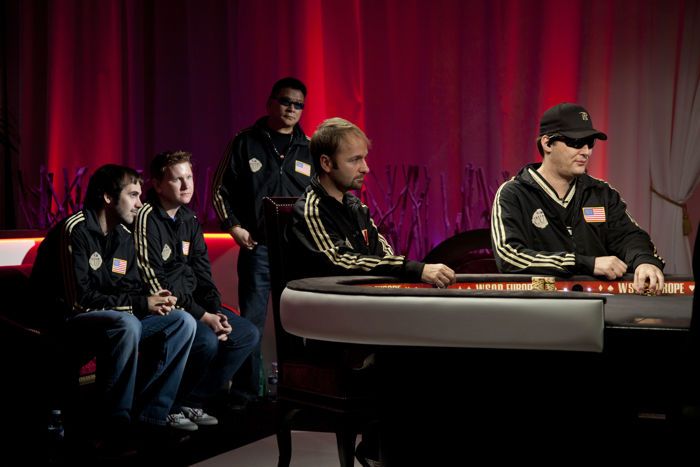
In a poker home game, the dealer's role can either rotate among players, passing the dealer chip and blinds clockwise each hand, or a designated skilled dealer can manage the cards consistently. When the dealer chip rotates, each player takes turns dealing, ensuring fairness. Alternatively, having a dedicated dealer ensures efficient, expert handling of cards throughout the game.
Traditionally, whoever possesses the dealer chip takes on the dealing responsibilities, maintaining consistency in managing the game flow and ensuring a fair distribution of opportunities and responsibilities among players.
Wishing you all the best of luck and hopefully our shuffle and dealing tips will help you enhance your Home Game and poker experience!
Get everything you need to host your own poker game!
| Poker Product | Necessity | Our Choice On Amazon |
|---|---|---|
| Poker Chip Set | Must Have A? | Buy Now |
| 2 x Proper Playing Cards | Must Have A? | Buy Now |
| Poker Table Felt | Must Have A? | Buy Now |
| Pro Poker Table | Nice to have K? | Buy Now |
| Funny Sunglasses | Just for Fun Q? | Buy Now |
| Poker Whiskey Glasses | Just for Fun Q? | Buy Now |
| I don't fold T-shirt | Just for Fun Q? | Buy Now |
| Poker Rap Star Chain | For Ballers J? | Buy Now |
Shuffle up and Deal FAQs:
How are the cards dealt in poker?
Cards in poker are dealt in a clockwise manner, starting with the player to the dealer's left. In Texas Hold'em, players receive two private cards (hole cards), while community cards are dealt face-up on the table across different betting rounds.
How do you deal on a poker table?
The dealer distributes cards clockwise, beginning from the player on their left. The dealer might deal cards for different poker variants, such as Texas Hold'em or Omaha, following specific rules for each game.
How do you deal a flop in poker?
In Texas Hold'em, after the initial betting round, the dealer deals three community cards face-up on the table. This is called the flop, forming part of the shared cards used by all players to make their best hand.
Who goes first after dealing in poker?
After dealing, the player to the left of the dealer starts the betting action. The order continues clockwise around the table for each betting round.
How do you shuffle in poker?
Shuffling involves mixing the cards to randomize their order. Common methods include the riffle shuffle, overhand shuffle, or automated shufflers for larger games.
How often should you shuffle in poker?
Cards should be shuffled thoroughly before each hand to ensure randomness and fairness in card distribution.
What is the shuffling method?
Various shuffling methods exist, including the riffle shuffle (splitting the deck into two halves and interleaving the cards), the overhand shuffle (simple, continuous mixing of cards), and automated shufflers that mechanically randomize cards.
Do you shuffle between rounds of poker?
Shuffling between rounds isn't necessary unless a player suspects irregularities or there are concerns about card manipulation. Generally, the deck remains untouched between rounds.
When do you burn cards when dealing in poker?
Before dealing the flop, turn, and river in Texas Hold'em, one card is "burned" (discarded face down) from the top of the deck to prevent cheating or marking. This card is not revealed and doesn't affect gameplay.
